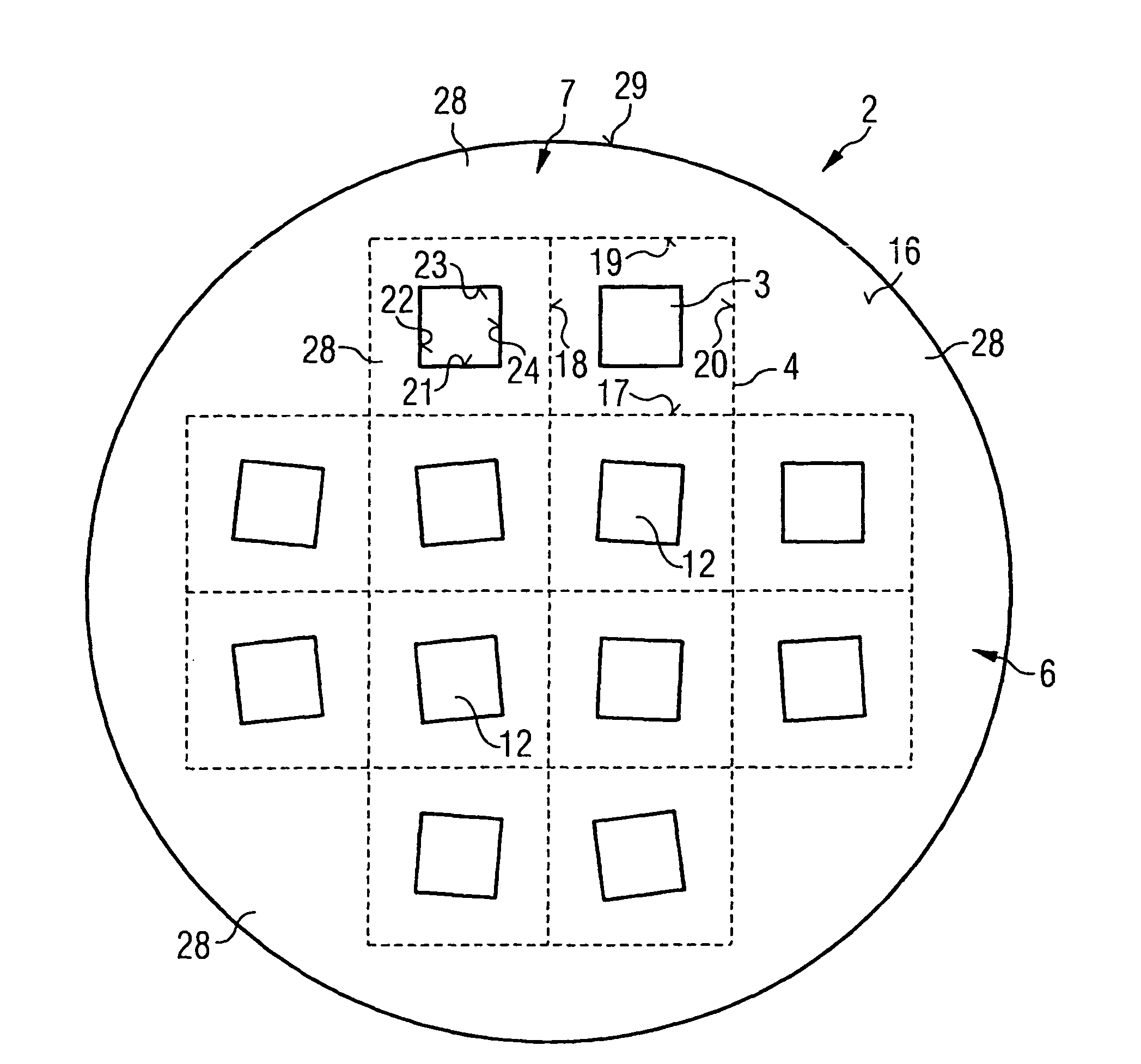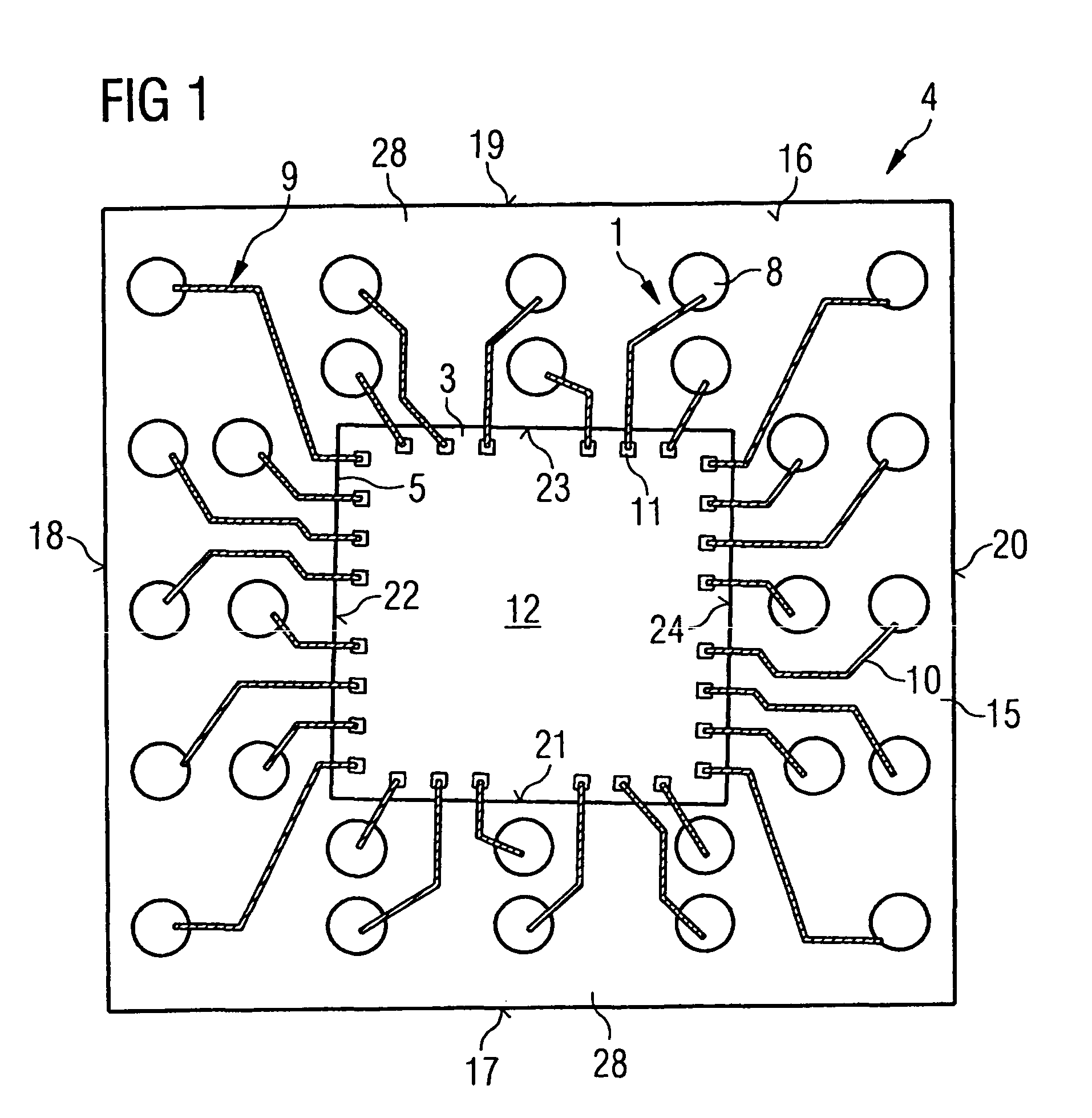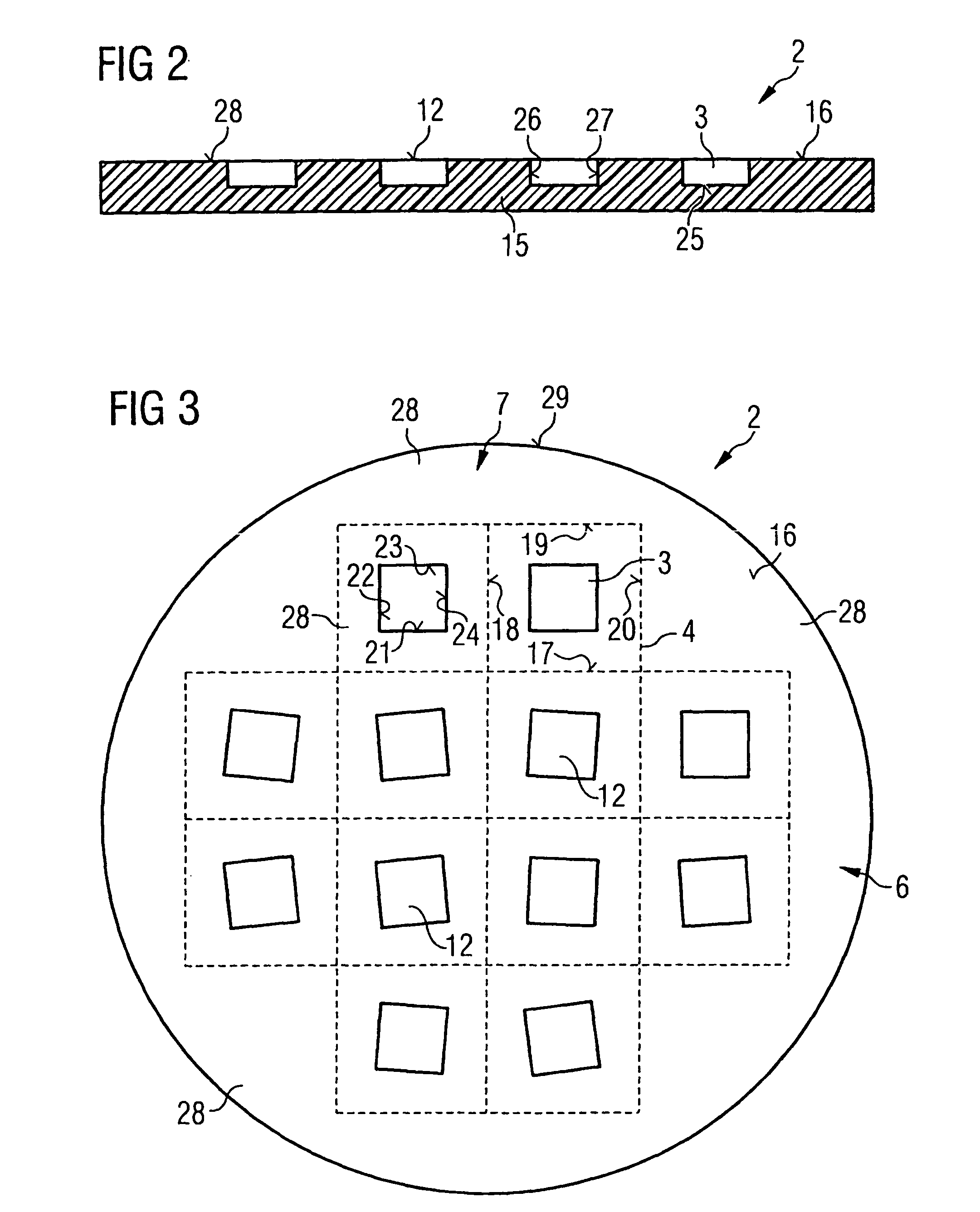Method for applying rewiring to a panel while compensating for position errors of semiconductor chips in component positions of the panel
a technology of semiconductor chips and component positions, applied in electrical testing, instruments, electrical apparatus, etc., can solve the problems of time-consuming method, chip position inaccuracy, and large failure of yield, so as to reduce rejects, shorten process duration, and improve alignment. the effect of accuracy
- Summary
- Abstract
- Description
- Claims
- Application Information
AI Technical Summary
Benefits of technology
Problems solved by technology
Method used
Image
Examples
Embodiment Construction
[0029]FIG. 1 illustrates a schematic plan view of a component position 4 of a panel according to a first example of the implementation of the method of the invention. To this end, this plan view shows the overall upper side 16 of such a component position 4. This overall upper side 16 is composed of a coplanar upper side 28 of a plastic compound 15 and an active upper side 12 of a semiconductor chip 3. Rewiring 1 is arranged on the overall upper side 16.
[0030]During the production of a panel which has such a component position 4, the semiconductor chip 3 is embedded in the plastic compound 15 with its rear side and its edge sides, which cannot be seen in this plan view. During this embedding, it is possible for position inaccuracies to occur which, in this plan view, can be seen from the fact that the boundary lines 17, 18, 19 and 20 of the component position 4 do not run parallel to the edges 21, 22, 23 and 24 of the semiconductor chip 3.
[0031]By contrast, the external contact area...
PUM
 Login to View More
Login to View More Abstract
Description
Claims
Application Information
 Login to View More
Login to View More - R&D
- Intellectual Property
- Life Sciences
- Materials
- Tech Scout
- Unparalleled Data Quality
- Higher Quality Content
- 60% Fewer Hallucinations
Browse by: Latest US Patents, China's latest patents, Technical Efficacy Thesaurus, Application Domain, Technology Topic, Popular Technical Reports.
© 2025 PatSnap. All rights reserved.Legal|Privacy policy|Modern Slavery Act Transparency Statement|Sitemap|About US| Contact US: help@patsnap.com



